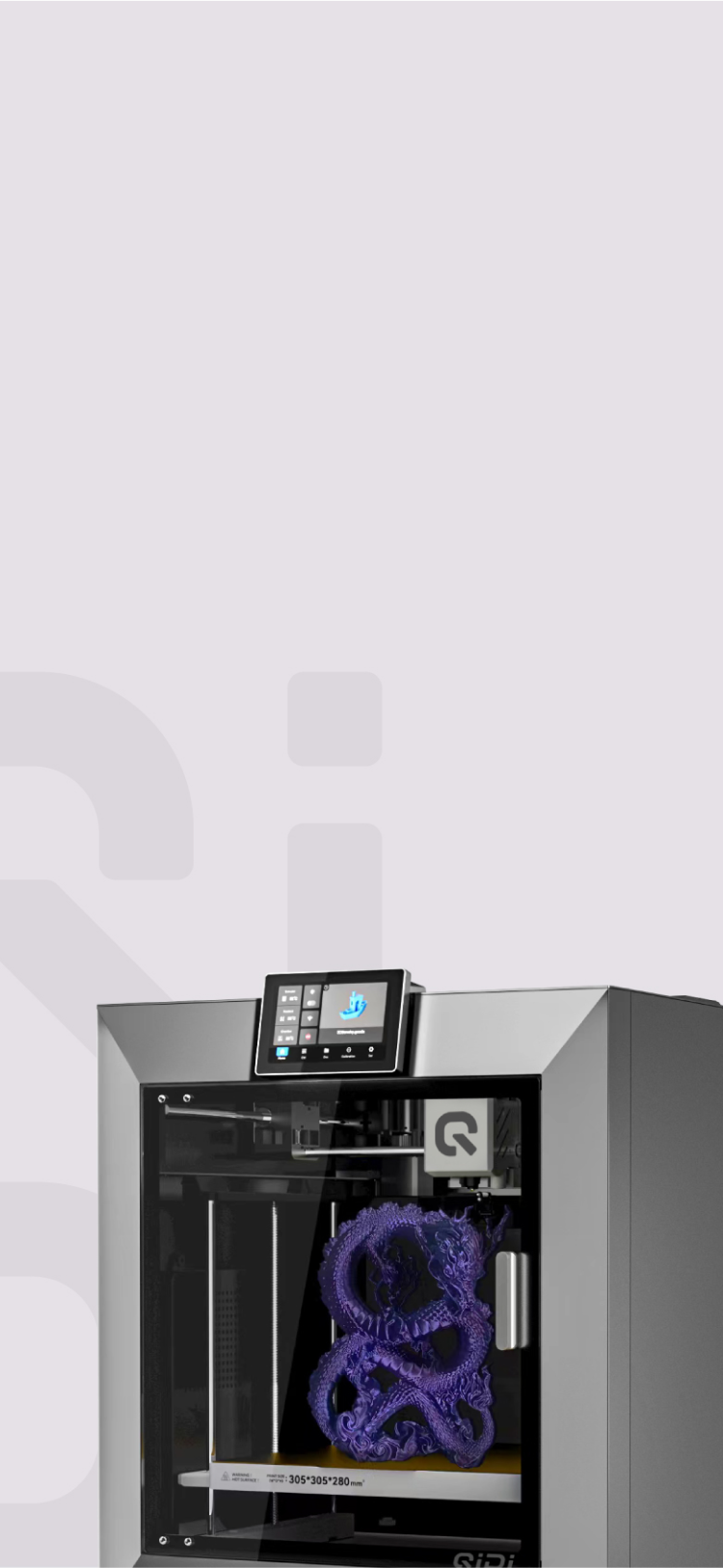The First Video in China to Break 1 Million Views!

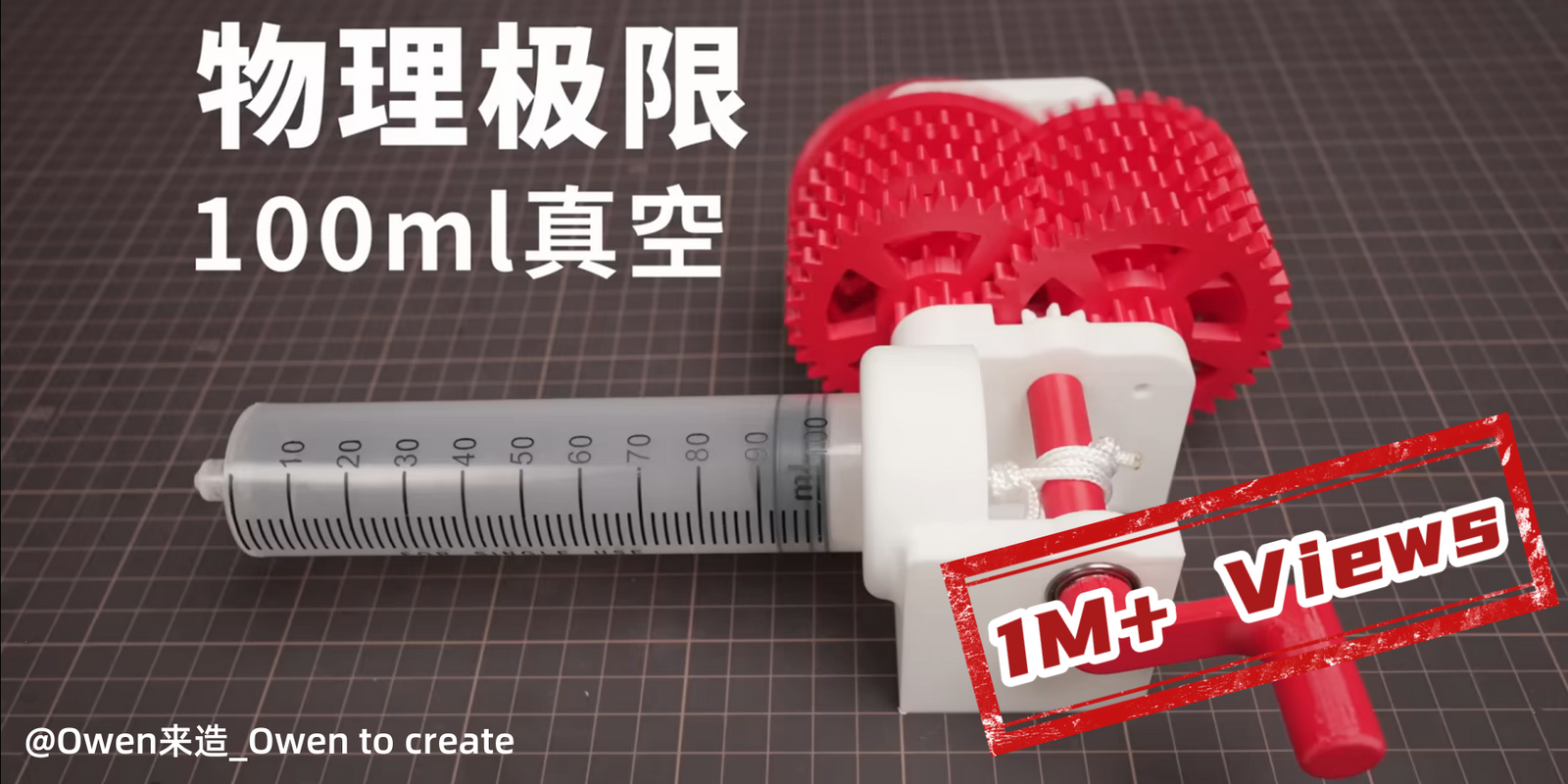
In order to explore how much energy can be generated by 100 ml of atmospheric pressure, Owen来造_Owen to create, a well-known creator in China, conducted experiments using a gear set printed by QIDI Max3 and a 100 ml syringe, hoping to find out how many gears can be driven, and how long the gear set can continue to rotate. This is the first video about QIDI TECH on the domestic bilibili with over one million views, and the video was also released on YouTube. Now, let us take a look at the video.
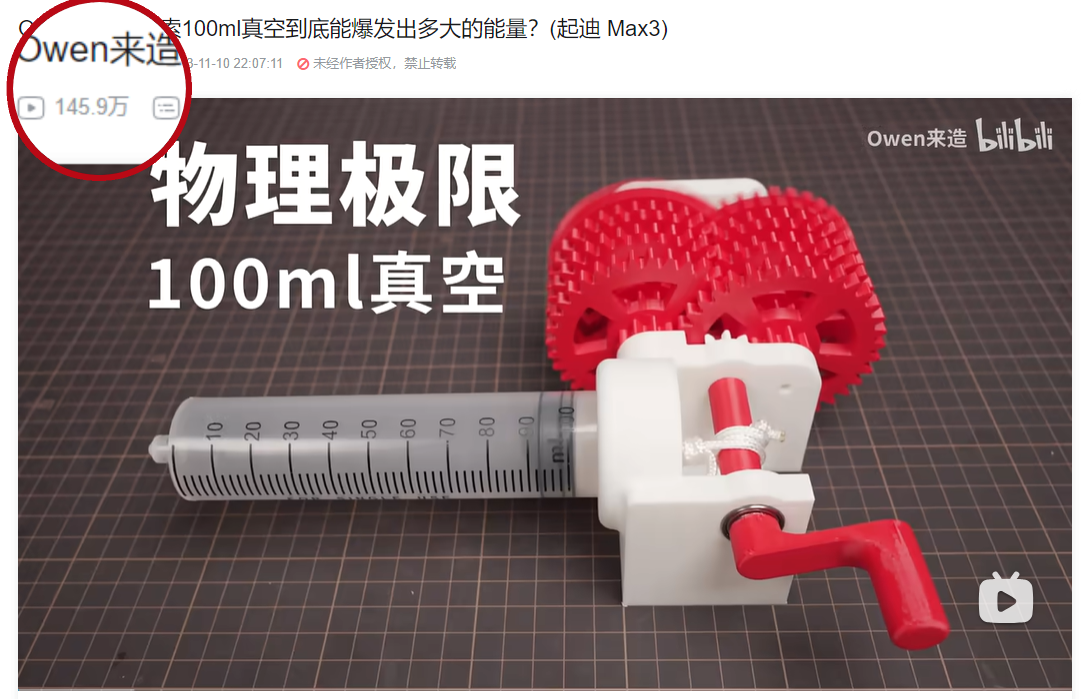
Firstly, Owen created a 3D model of the gear set in Fusion360, printed the model with QIDI Max3 and assembled it.
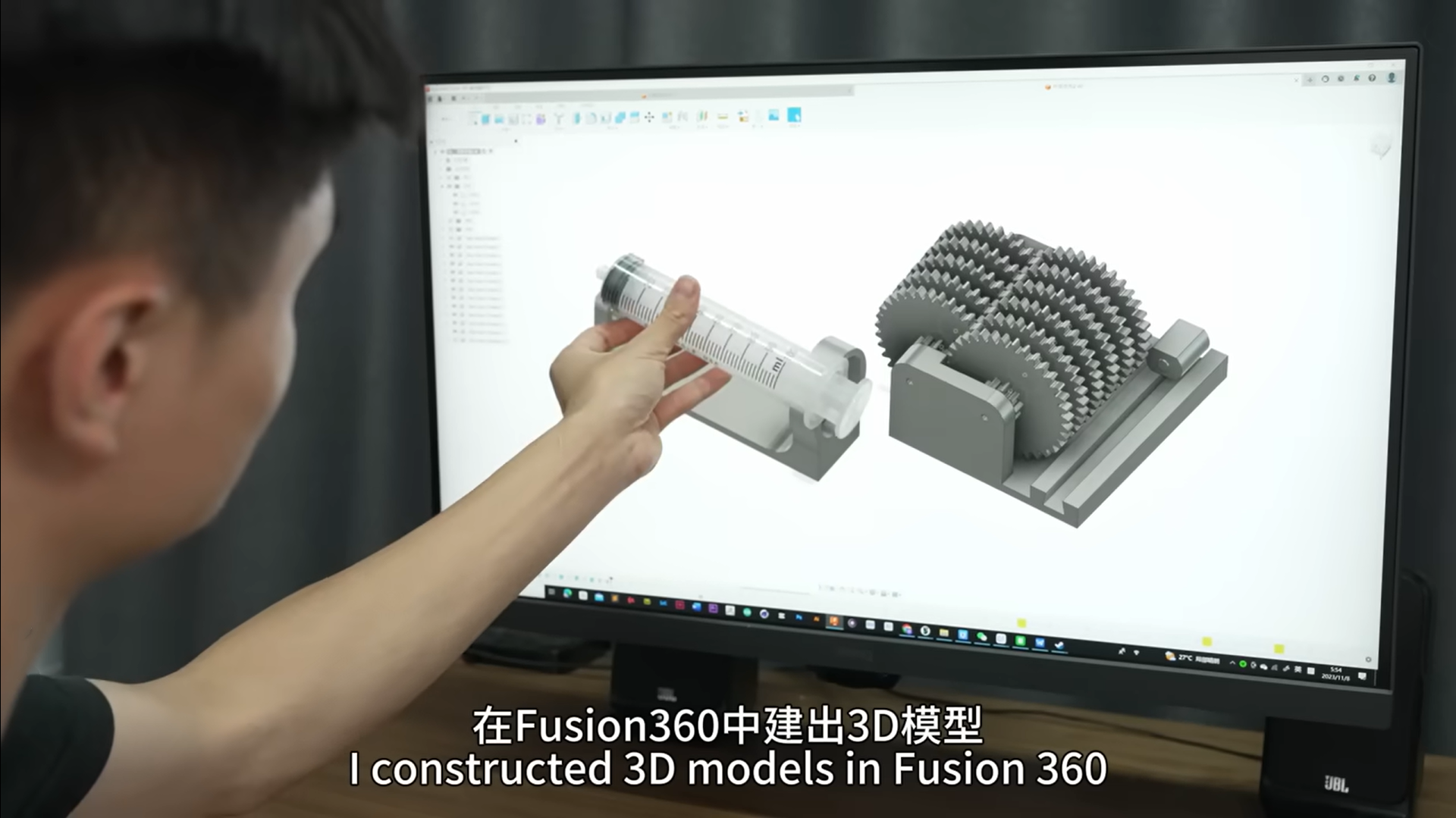
After assembling the model, we can observe a gradual slowdown in the piston’s movement as the number of gears increases, but the whole device come to a halt when the number of gears reaches eight.
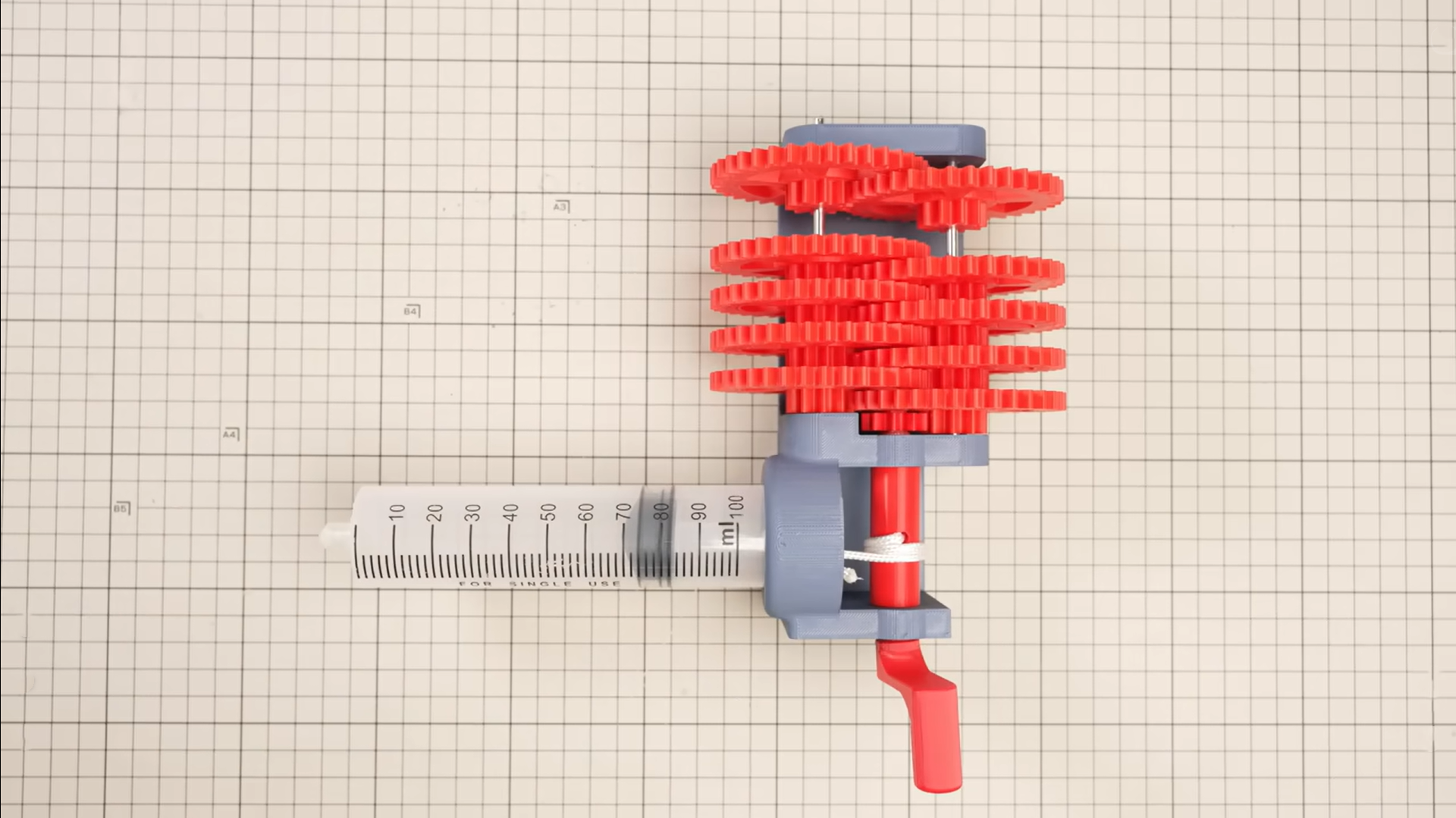
When the gear set is in operation, it may be noticed that the vibrations caused by the rotation at high speeds create noise and drag due to the tolerances between the gears and shafts. This is due to the relatively high friction between the 3D printed parts, with considerable energy loss. Thus, Owen decided to add bearings to all the places, and the modified device worked smoothly in eighth gear.
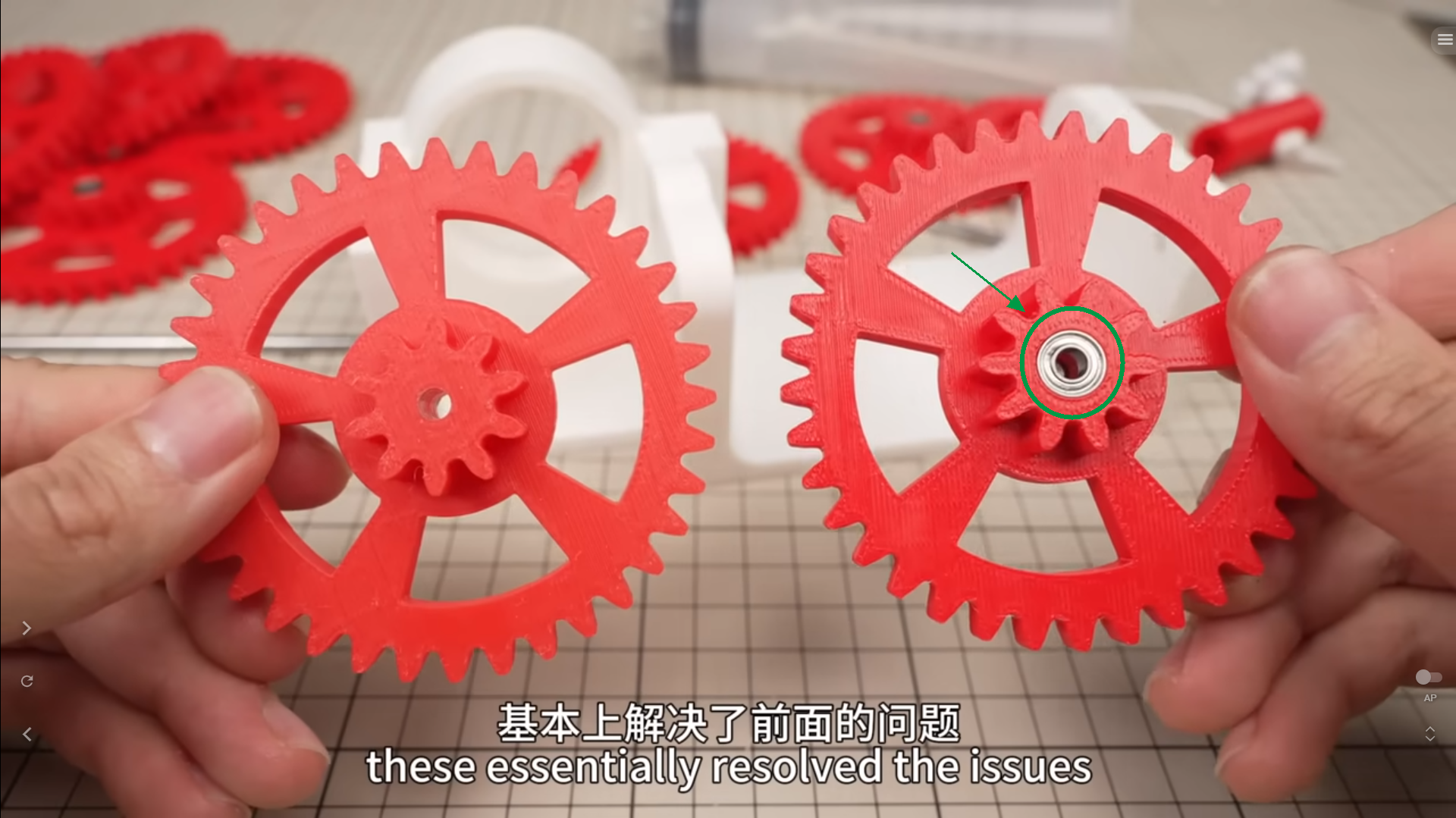
In order to find the precise force to be able to drive the eighth gear, Owen made the central red shaft slightly thinner to reduce the torque output from the gear. With the new version set, the piston took five times longer to rebound than with the first version. After this, Owen began to wonder how he would be able to drive the ninth gear, whether this would break the time record again, and whether it would have a different effect.
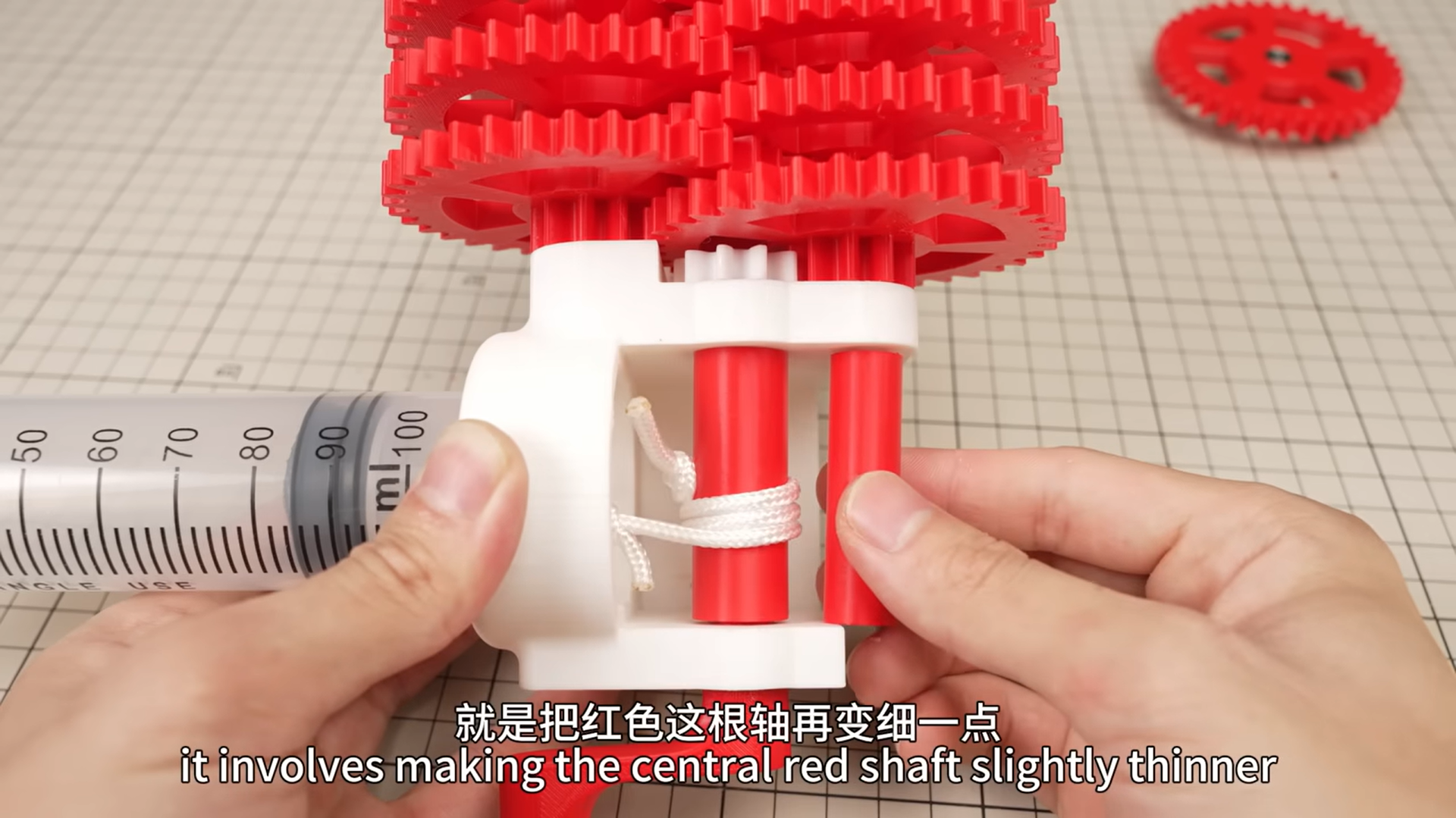
In order to drive the ninth gear, it was necessary to increase the preceding force by increasing the radius of the center shaft and by using a thicker syringe. At this point, however, the force on the shaft and syringe is so great that handles printed with PLA+, PLA-CF, PC and Nylon are twisted.
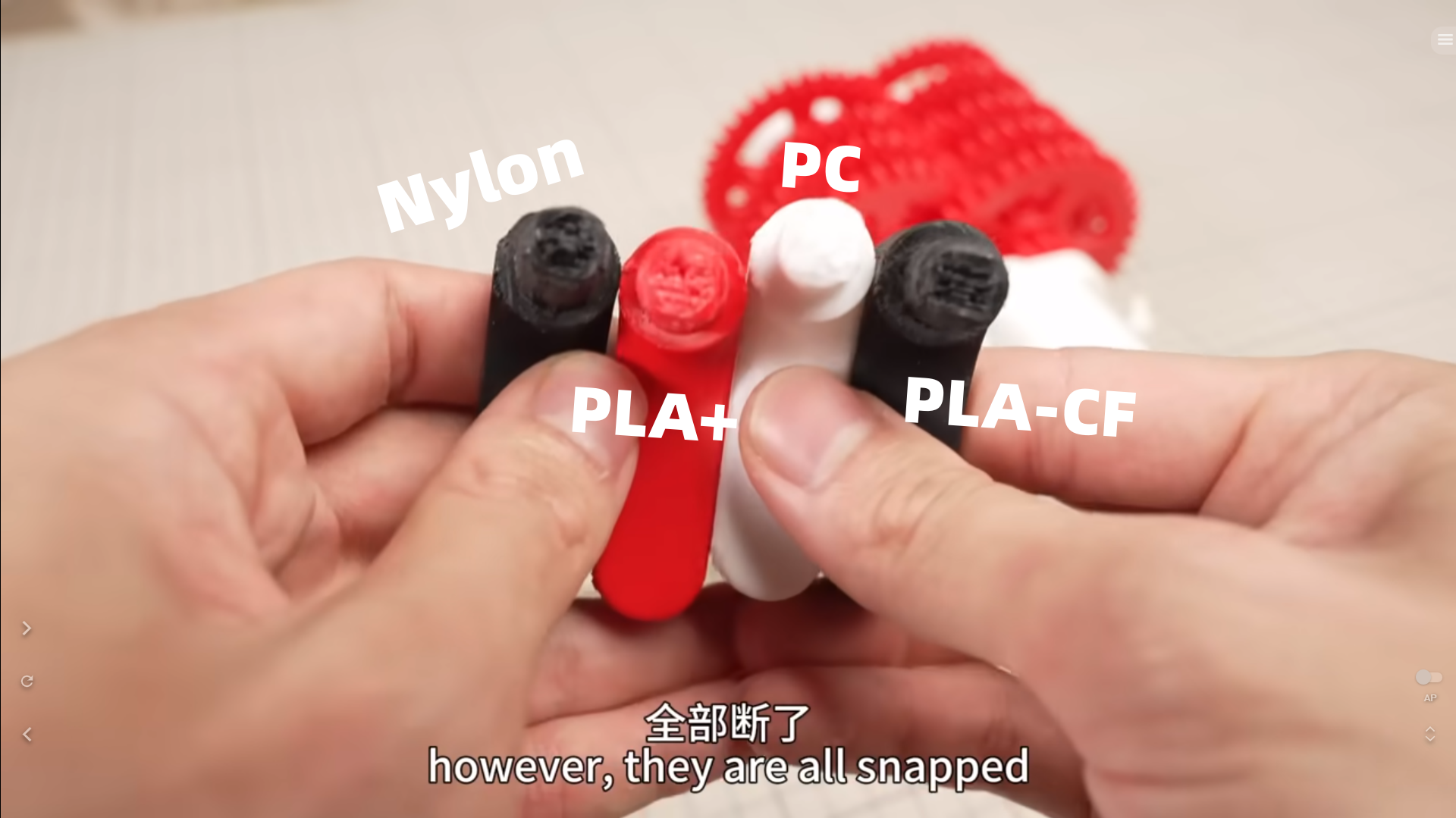
Thus, Owen decided to print carbon fiber reinforced nylon and fiberglass reinforced ABS with QIDI Max3. The active chamber heating up to 65°C allows users to print a wide range of high-performance filaments and perfectly solves warping and layer separation when printing large-volume models. The picture below shows Owen’s small ITX computer case printed with ASA.
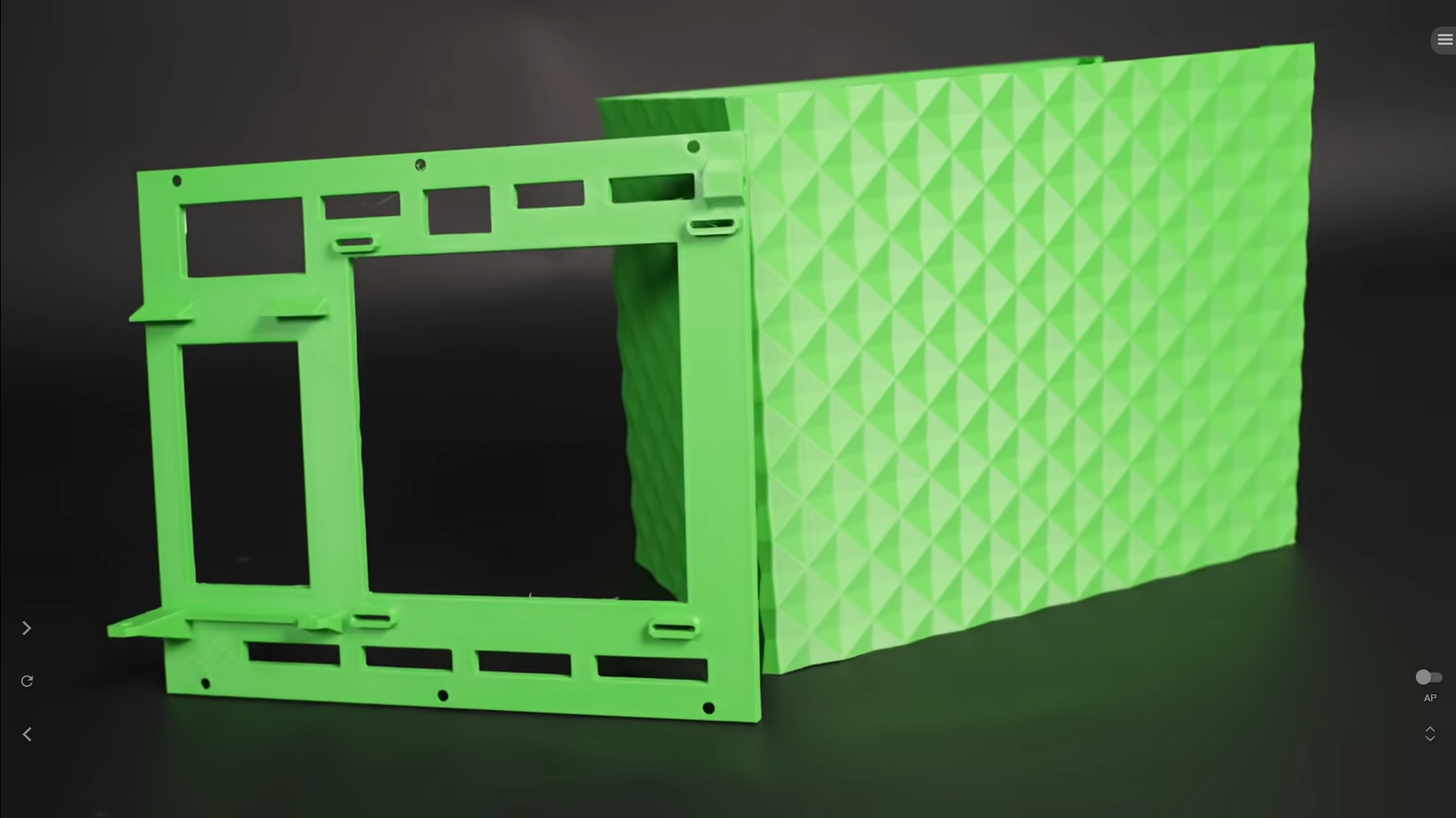
With the handle and gears printed with carbon fiber reinforced nylon, Owen was able to get the device to run and drive the ninth gear, but the piston rebounded only half as long as it did with eight gears. From this, it follows that driving in ninth gear will not result in a longer bounce time, but will result in an unnecessary loss of energy. The key to getting longer bounce times is to find the critical point.
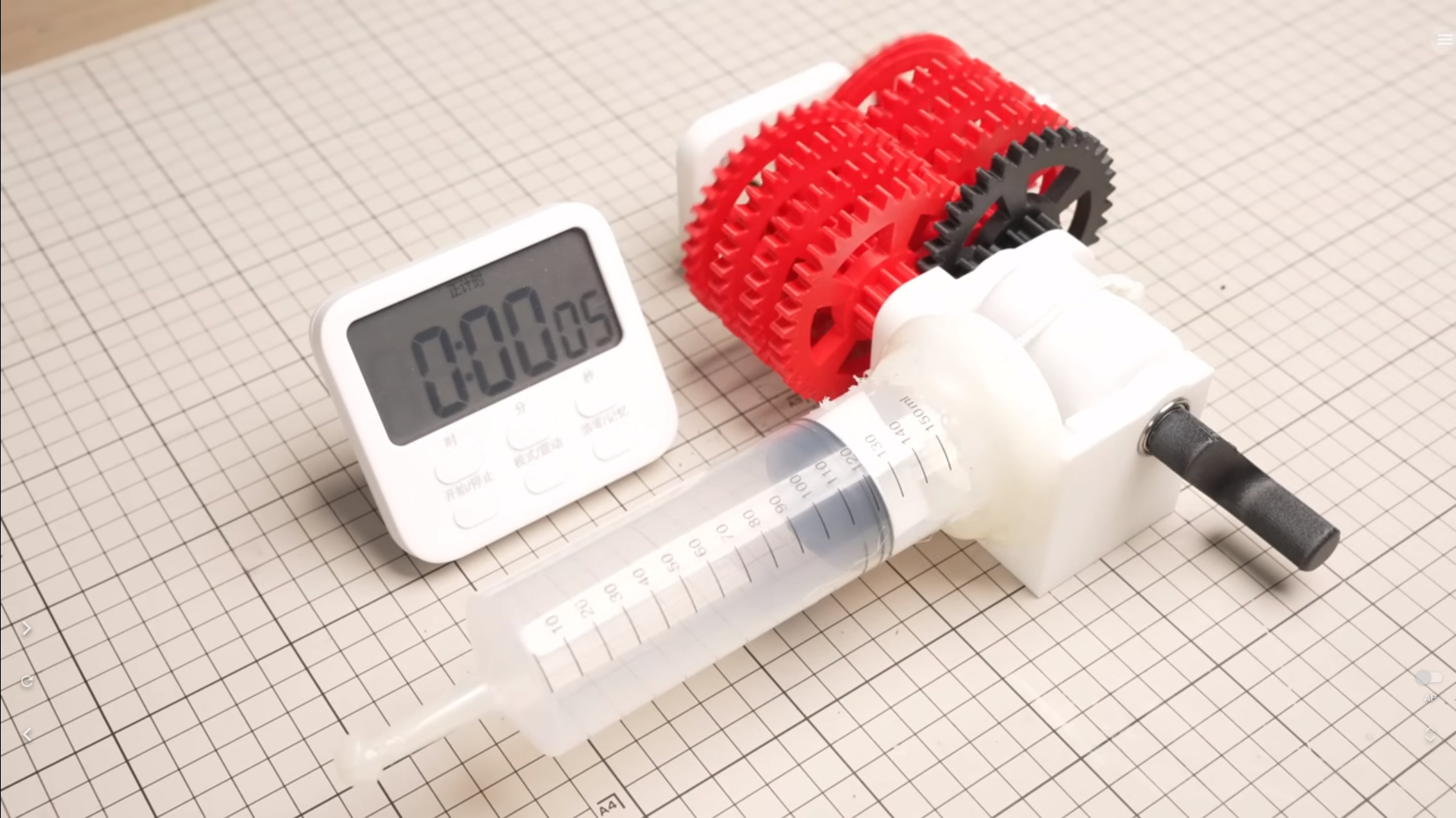
It's astonishing how much physical and mechanical knowledge is embedded in this experiment. For more details on the experiment, please watch the original video posted on the “Owen来造_Owen to create”.
QIDI Max3 supports users in printing not only normal filaments, but also a wide range of specialized high-performance filaments. Besides Max3, QIDI Plus3 also features active chamber heating. If you also have any creative project ideas, you are welcome to share your creativity on YouTube or social media and share your projects pictures or videos with QIDI 3d printers. There may be unexpected gifts! The best projects may also be shared on the QIDI official accounts!


 Q2
Q2
 Plus 4
Plus 4
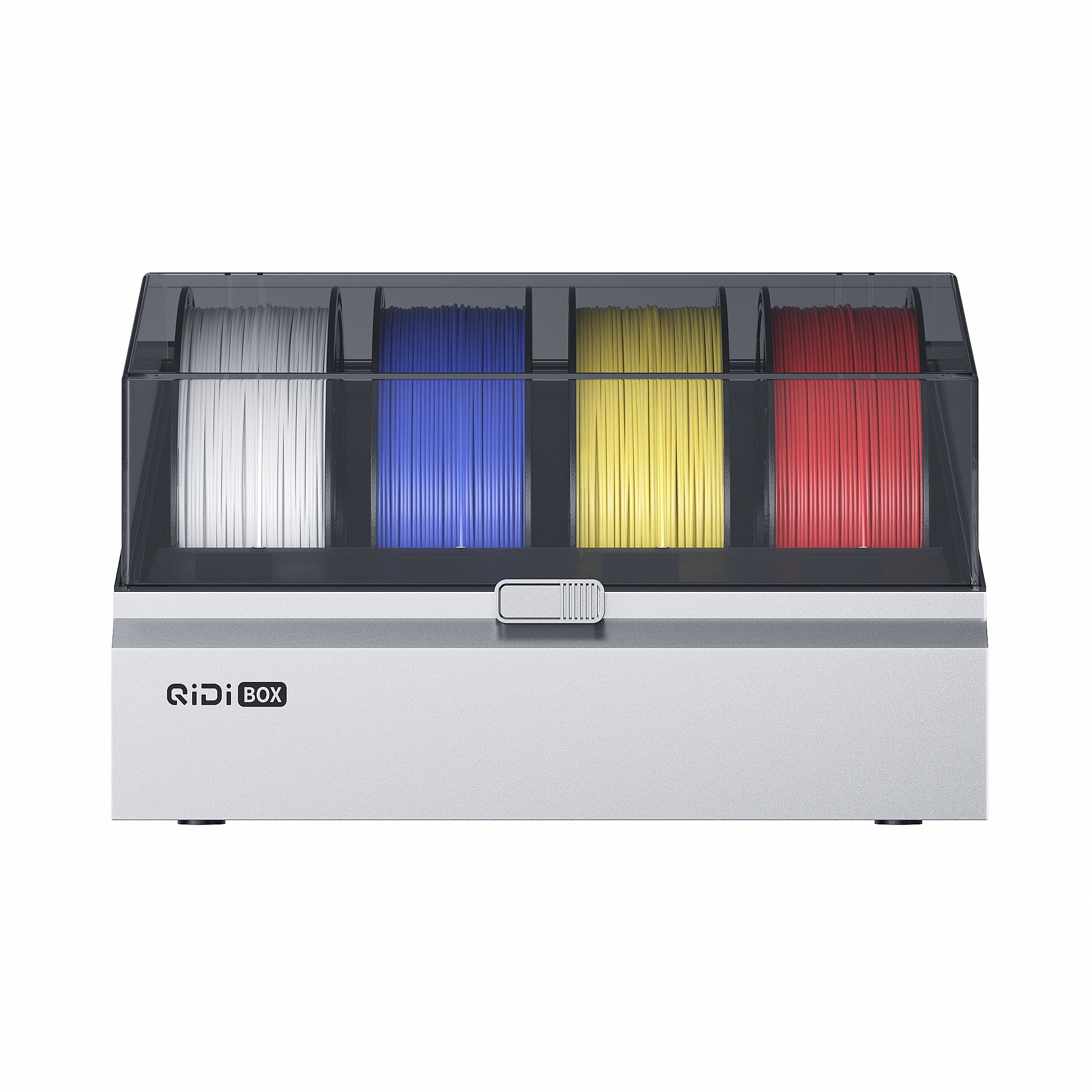 QIDI Box
QIDI Box
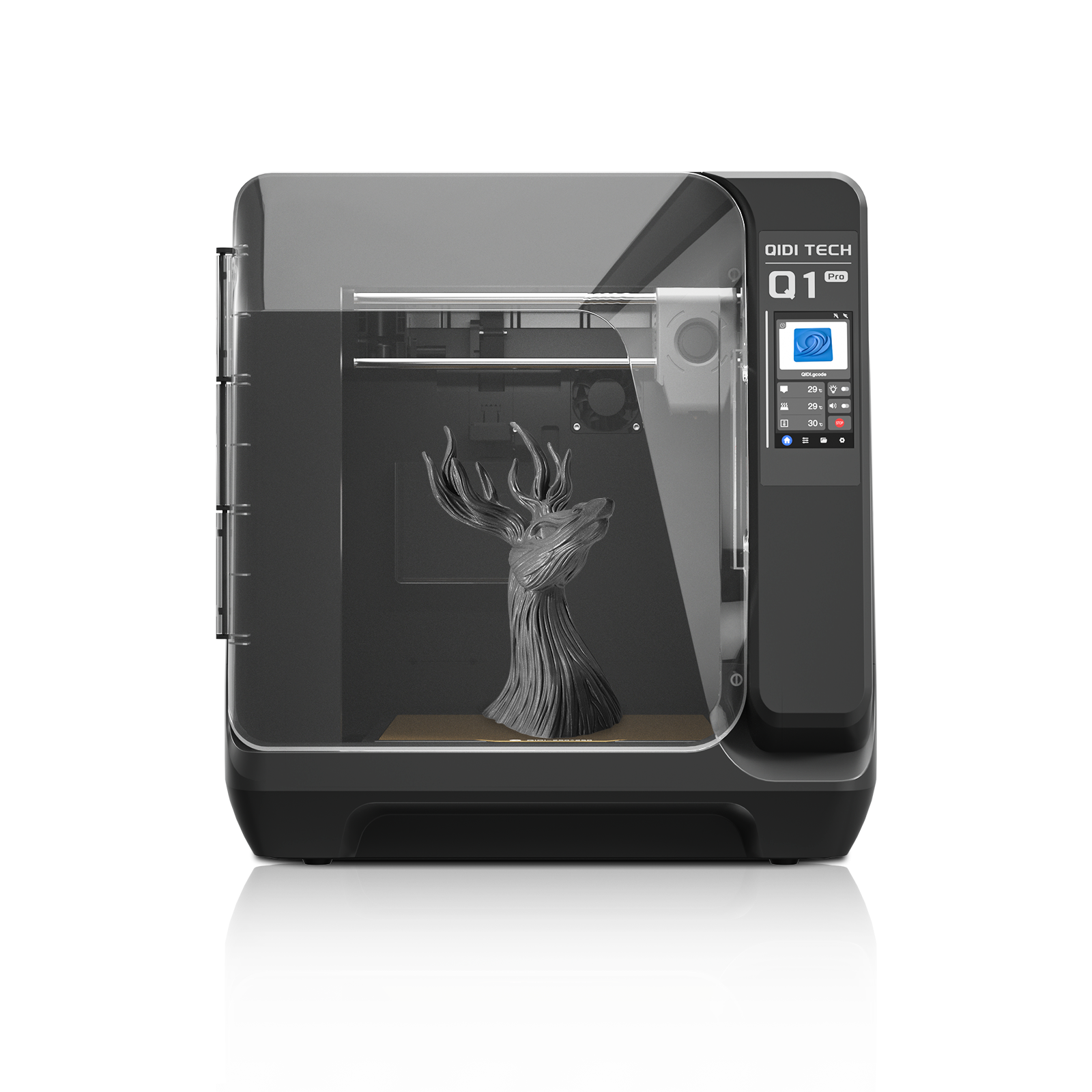 Q1 Pro
Q1 Pro
 X-Max 3
X-Max 3

